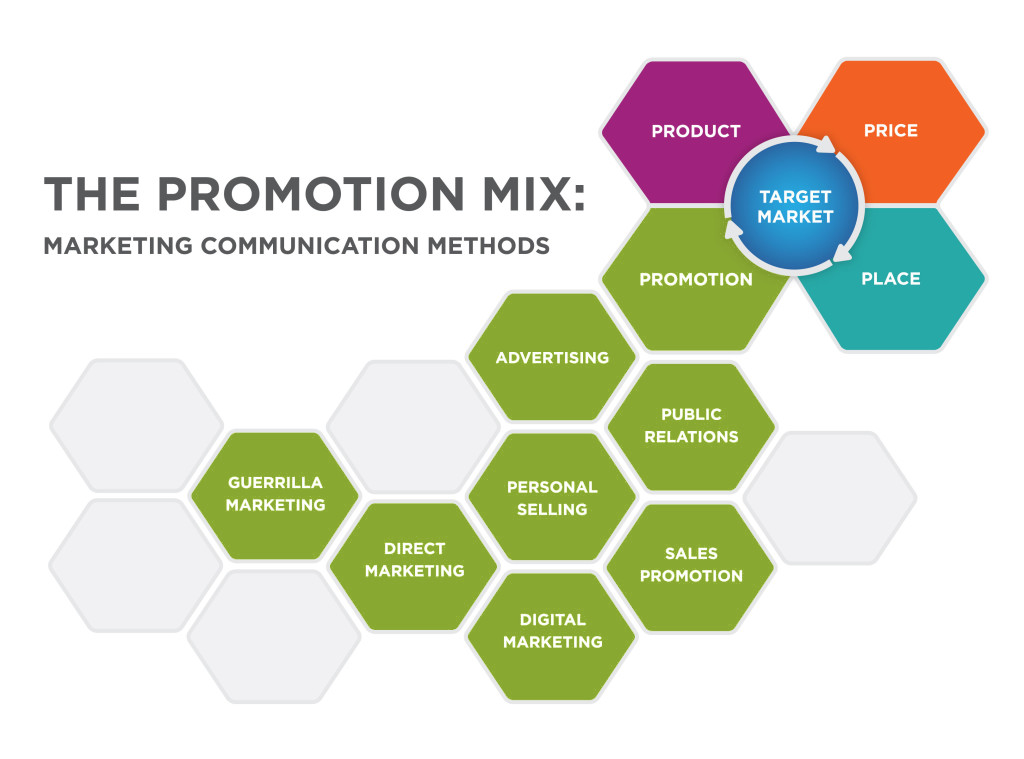10.1 Integrated Marketing Communication
Making an Impact
Having a great product available to your customers at a great price does absolutely nothing for you if your customers don’t know about it. That’s where promotion enters the picture: it does the job of connecting with your target audiences and communicating what you can offer them.
In today’s marketing environment, promotion involves integrated marketing communication (IMC). In a nutshell, IMC involves bringing together a variety of different communication tools to deliver a common message and make a desired impact on customers’ perceptions and behaviour. As an experienced consumer in the English-speaking world, you have almost certainly been the target of IMC activities (practically every time you “like” a TV show, article, or a meme on Facebook, you are participating in an IMC effort!).
What Is Marketing Communication?
Defining marketing communication is tricky because, in a real sense, everything an organization does has communication potential. The price placed on a product communicates something very specific about the product. A company that chooses to distribute its products strictly through discount stores sends a distinct message to the market. A business that follows strict environmental practices says much about the organization.
Marketing communication refers to activities deliberately focused on promoting an offering among target audiences. The following definition helps to clarify this term:
Marketing communication includes all the messages, media, and activities used by an organization to communicate with the market and help persuade target audiences to accept its messages and take action accordingly.
Integrated marketing communication is the the process of coordinating all this activity across different communication methods. Note that a central theme of this definition is persuasion: persuading people to believe something, to desire something, and/or to do something. Effective marketing communication is goal directed, and it is aligned with an organization’s marketing strategy. It aims to deliver a particular message to a specific audience with a targeted purpose of altering perceptions and/or behaviour. Integrated marketing communication (IMC) makes marketing activity more efficient and effective because it relies on multiple communication methods and customer touch points to deliver a consistent message in multiple means and in more compelling ways.
The Promotion Mix: Marketing Communication Methods
The promotion mix refers to how marketers combine a range of marketing communication methods to execute their marketing activities. Different methods of marketing communication have distinct advantages and complexities, and it requires skill and experience to deploy them effectively. Not surprisingly, marketing communication methods evolve over time as new communication tools and capabilities become available to marketers and the people they target.

Seven common methods of marketing communication are described below:
- Advertising: Any paid form of presenting ideas, goods, or services by an identified sponsor. Historically, advertising messages have been tailored to a group and employ mass media such as radio, television, newspaper, and magazines. Advertising may also target individuals according to their profile characteristics or behaviour; examples are the weekly ads mailed by supermarkets to local residents or online banner ads targeted to individuals based on the sites they visit or their Internet search terms.
- Public relations (PR): The purpose of public relations is to create goodwill between an organization (or the things it promotes) and the “public” or target segments it is trying to reach. This happens through unpaid or earned promotional opportunities: articles, press and media coverage, winning awards, giving presentations at conferences and events, and otherwise getting favourable attention through vehicles not paid for by the sponsor. Although organizations earn rather than pay for the PR attention they receive, they may spend significant resources on the activities, events, and people who generate this attention.
- Personal selling: Personal selling uses people to develop relationships with target audiences for the purpose of selling products and services. Personal selling puts an emphasis on face-to-face interaction, understanding the customer’s needs, and demonstrating how the product or service provides value.
- Sales promotion: Sales promotions are marketing activities that aim to temporarily boost sales of a product or service by adding to the basic value offered, such as “buy one get one free” offers to consumers or “buy twelve cases and get a 10 percent discount” to wholesalers, retailers, or distributors.
- Direct marketing: This method aims to sell products or services directly to consumers rather than going through retailers. Catalogues, telemarketing, mailed brochures, or promotional materials and television home shopping channels are all common traditional direct marketing tools. Email and mobile marketing are two next-generation direct marketing channels.
- Digital marketing: Digital marketing covers a lot of ground, from Web sites to search-engine, content, and social media marketing. Digital marketing tools and techniques evolve rapidly with technological advances, but this umbrella term covers all of the ways in which digital technologies are used to market and sell organizations, products, services, ideas, and experiences.
- Guerrilla marketing: This newer category of marketing communication involves unconventional, innovative, and usually low-cost marketing tactics to engage consumers in the marketing activity, generate attention and achieve maximum exposure for an organization, its products, and/or services. Generally guerrilla marketing is experiential: it creates a novel situation or memorable experience consumers connect to a product or brand.
Most marketing initiatives today incorporate multiple methods: hence the need for IMC.
The Objectives of Marketing Communication
The basic objectives of all marketing communication methods are (1) to communicate, (2) to compete, and (3) to convince. In order to be effective, organizations should ensure that whatever information they communicate is clear, accurate, truthful, and useful to the stakeholders involved. In fact, being truthful and accurate in marketing communications is more than a matter of integrity; it’s also a matter of legality, since fraudulent marketing communications can end in lawsuits and even the criminal justice system.
Marketing communication is key to competing effectively, particularly in markets where competitors sell essentially the same product at the same price in the same outlets. Only through marketing communications may an organization find ways to appeal to certain segments, differentiate its product, and create enduring brand loyalty. Remaining more appealing or convincing than competitors’ messages is an ongoing challenge.
Ideally, marketing communication is convincing: it should present ideas, products, or services in such a compelling way that target segments are led to take a desired action. The ability to persuade and convince is essential to winning new business, but it may also be necessary to re-convince and retain many consumers and customers. Just because a customer buys a particular brand once or a dozen times, or even for a dozen years, there is no guarantee that the person will stick with the original product. That is why marketers want to make sure he or she is constantly reminded of the product’s unique benefits.
Case: Fashion Nova IMC Strategy

Often when we think about IMC, it comes off as either so many activities to be done or an expensive mode of marketing, especially during the market entry stage for brands. Understanding and carefully selecting what IMC tools to put together for a brand is key to a brand’s success, regardless of what market entry stage the brand might be in. While these methods might seem expensive for new brands, Fashion Nova is an example of a new brand that has been able to scale up using this method successfully.
At first glance, it looks like this brand uses influencer marketing as its only marketing tactic, harnessing social media marketing with looks on influencers of all shapes and sizes. However, the clothing e-commerce company has exploded with a unique retention marketing strategy that includes public relations (event sponsorship), direct response, email marketing, ambassador marketing, and sales promotions. Their impeccable merge of these marketing methods has kept users coming back for more, as the brand made $4.3M in revenue as of 2021 (Fashion Nova Revenue: Annual, Historic, and Financials – Zippia, 2022)
Aderoju Bankole, October 2022
Introduction to Business (Lumen) The Marketing Mix 14.3: Promotion edited by LibreTexts, based on Introduction to Business by Boundless, is licensed under a Creative Commons Attribution-ShareAlike 4.0 International License.

